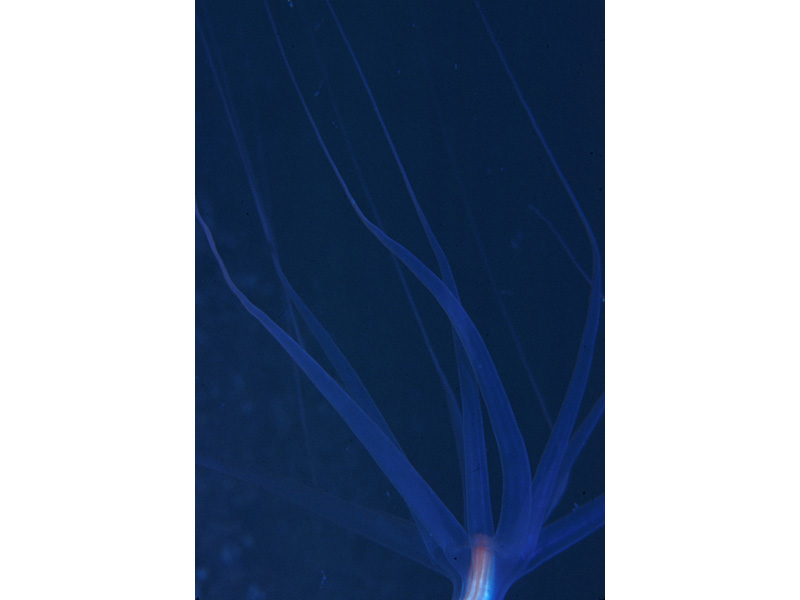Purple anemone (Halcampoides purpureus)
Distribution data supplied by the Ocean Biodiversity Information System (OBIS). To interrogate UK data visit the NBN Atlas.Map Help
| Researched by | Emily Wilson | Refereed by | Admin |
| Authority | (Studer, 1879) | ||
| Other common names | - | Synonyms | Halcampoides elongatus |
Summary
Description
A burrowing anemone with an elongated column, dirty white or flesh-coloured sometimes suffused with vivid green. The tentacles are very long, even in contraction, tapering to fine points. They are translucent grey-brown in colour often shading to reddish-brown and each one having a more or less extensive white spot near its base.
Recorded distribution in Britain and Ireland
Recorded at sites on the coast of Lundy, south-west Wales, north-west Scotland and west Ireland.Global distribution
-Habitat
Burrows in mud, sand or gravel, always offshore, occurring down to at least 1000 m but 10-25 m around Britain and Ireland.Depth range
-Identifying features
- Column elongated, not divided into distinct regions, its aboral end rounded and provided with cinclides.
- Periderm absent.
- Disc small, with a slight hypostome.
- Length of column when not buried 10 cm, becoming much longer when buried; full expanse of tentacles up to 10 cm.
Additional information
The taxonomy of the Halcampoides purpurea complex is still confused (Howson & Picton, 1997).
Listed by
- none -
Bibliography
Datasets
NBN (National Biodiversity Network) Atlas. Available from: https://www.nbnatlas.org.
OBIS (Ocean Biodiversity Information System), 2025. Global map of species distribution using gridded data. Available from: Ocean Biogeographic Information System. www.iobis.org. Accessed: 2025-08-02
Citation
This review can be cited as:
Last Updated: 07/09/1999



